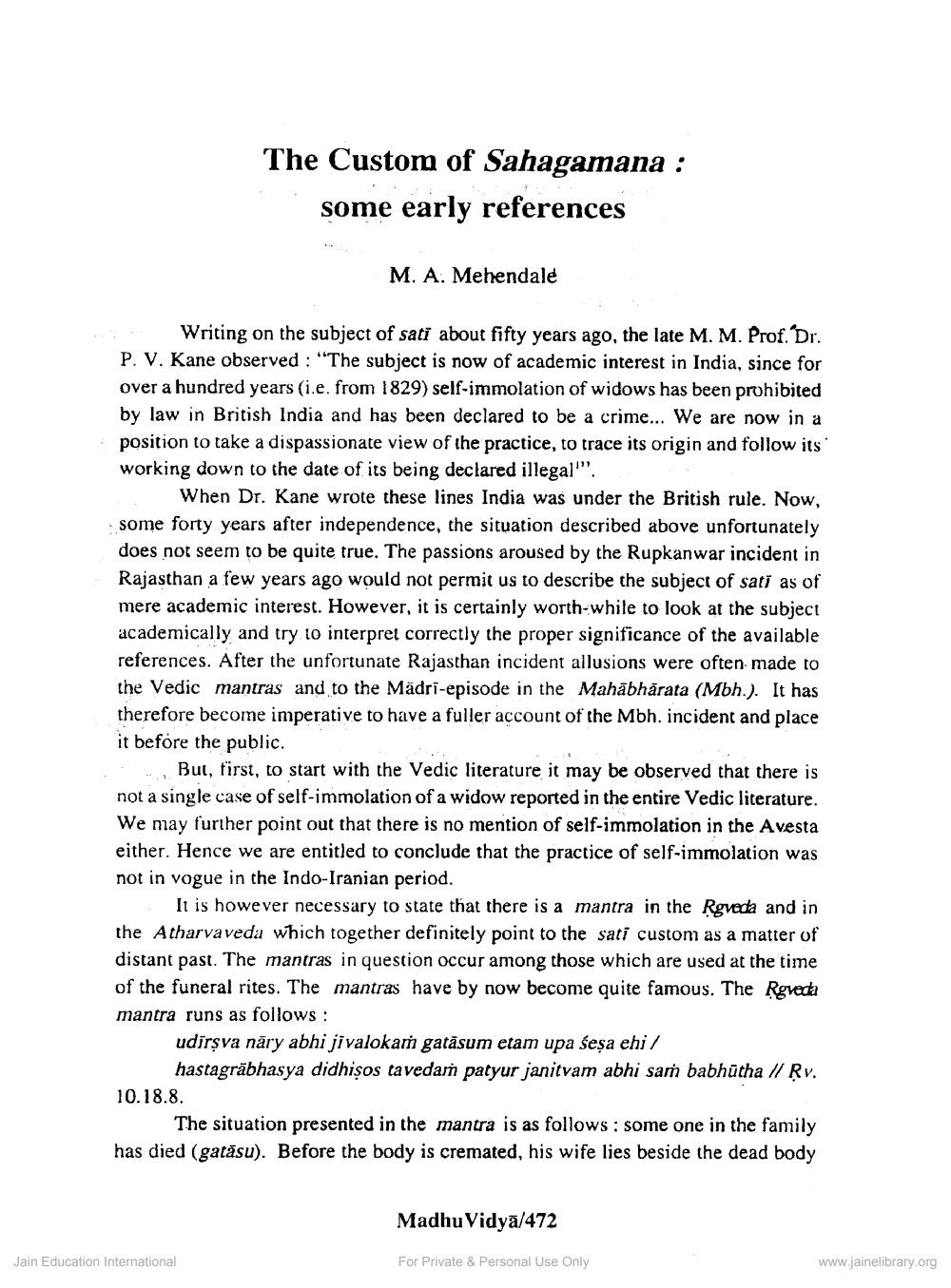________________
The Custom of Sahagamana :
some early references
M. A. Mehendale
Writing on the subject of sati about fifty years ago, the late M. M. Prof. Dr. P. V. Kane observed : "The subject is now of academic interest in India, since for over a hundred years (i.e. from 1829) self-immolation of widows has been prohibited by law in British India and has been declared to be a crime... We are now in a position to take a dispassionate view of the practice, to trace its origin and follow its working down to the date of its being declared illegal!".
When Dr. Kane wrote these lines India was under the British rule. Now, some forty years after independence, the situation described above unfortunately does not seem to be quite true. The passions aroused by the Rupkanwar incident in Rajasthan a few years ago would not permit us to describe the subject of sati as of mere academic interest. However, it is certainly worth-while to look at the subject academically and try to interpret correctly the proper significance of the available references. After the unfortunate Rajasthan incident allusions were often made to the Vedic mantras and to the Mädri-episode in the Mahābhārata (Mbh.). It has therefore become imperative to have a fuller account of the Mbh. incident and place it before the public. . But, first, to start with the Vedic literature it may be observed that there is not a single case of self-immolation of a widow reported in the entire Vedic literature. We may further point out that there is no mention of self-immolation in the Avesta either. Hence we are entitled to conclude that the practice of self-immolation was not in vogue in the Indo-Iranian period.
It is however necessary to state that there is a mantra in the Rgveda and in the Atharvaveda which together definitely point to the sati custom as a matter of distant past. The mantras in question occur among those which are used at the time of the funeral rites. The mantras have by now become quite famous. The Rgveda mantra runs as follows:
udirşva năry abhi jivalokam gatásum etam upa seșa ehi/
hastagräbhasya didhişos tavedam patyur janitvam abhi sam babhūtha // Rv. 10.18.8.
The situation presented in the mantra is as follows : some one in the family has died (gatásu). Before the body is cremated, his wife lies beside the dead body
Madhu Vidyā/472
Jain Education International
For Private & Personal Use Only
www.jainelibrary.org




